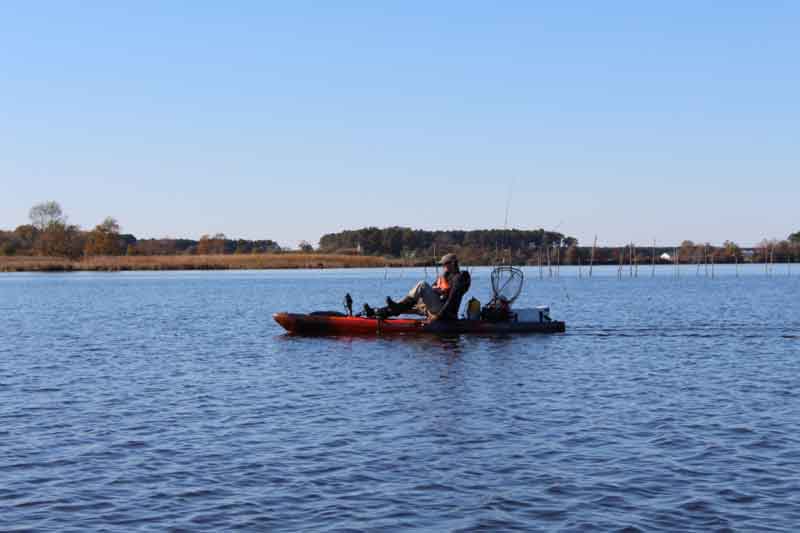Spending some time on your computer prior to a trip can definitely increase your odds of finding fish, and of being as comfortable as possible while kayak fishing. While kayaks offer many advantages, you’re limited in the distance you can travel and for me, as a senior angler, I rarely paddle more than seven miles in a trip and often cover less ground than that. Further, in a kayak, you’re totally exposed to the weather and the waves. So I study several websites before heading to the water, to develop a tentative plan. And while there’s no substitute for having personal knowledge of the waters you plan to fish, knowing how the conditions are likely to be may influence where you launch or in which direction you travel. Here are a few key items and websites to consider:

- Geography – A lot of kayak fishing is done relatively close to the shoreline, so take a look at Google Maps or Google Earth for the areas you plan to fish. In Map View, you can see the general layout of the land masses and how far it is from launch points to different locations. By studying these maps along with wind direction forecasts, you can look for spots to tuck in out of the breeze. You can use the Satellite View to get a closer look at the shape of shorelines, small tidal creeks or ponds that might be worth exploring, and sometimes even channels or depressions in shallow areas. If you’re using the more comprehensive Google Earth, you may be able to look at different seasonal images that show better detail when leaves are off the trees.
- Weather - I often check weather.com and look at the hourly forecast. While not perfect, it gives you some idea of the likely conditions. Recently a last-minute weather check led to delaying a morning launch until 8:30 a.m., which allowed some early morning storms to pass out of the area.
- Wind Speed and Direction - I use windfinder.com, but other wind websites are available. You can use them to predict wind speed and direction at launch time, and how it may change during the day. If the wind is predicted to be above 10 mph, you may choose to fish in different locations or look for shorelines or sheltered creeks and ponds. During my kayak fishing trip just yesterday, the wind had been blowing hard from the southwest but shifted to the north and northwest during the early morning. Knowing the anticipated change allowed me to fish along a shoreline that provided shelter while other nearby spots were much rougher.
- Tides - Many fishing websites provide tidal data, most of which are based on NOAA information. I personally get most of my tidal information from tides4fishing.com, which gives tides in both a tabular and graphical format. I prefer fishing most shallow water spots when the water is mid-tide or higher. A fast moving tidal current usually fishes better than a slack tide and as a generality, the current will be higher between tides rather than on the high or the low. To complicate matters, in most parts of the relatively shallow Chesapeake Bay, strong wind can easily overwhelm the natural tidal patterns. Knowing the tidal highs and lows is helpful as you plan, but remember that what you observe on the water can be different from the predictions.
- Depth Contours and Bathymetric Features - When visiting unfamiliar waters or if I want to explore certain areas more closely, services like Navionics can be very helpful. While they are not necessarily highly accurate in all areas, it’s still useful to study an area’s bathymetrics in advance — particularly if you do not have a chartplotter on your kayak — to get a sense of where channels, drop-offs, lumps, edges, and other structural features may be located.
- Solunar Predictions - The tides4fishing site mentioned earlier also gives solunar (sun and moon) activity predictions, which some anglers feel is an important factor contributing to fish activity. I don't plan my trips around them, but it certainly doesn’t hurt to look at them, either.
A final note: while this article is written from a kayak fishing perspective, remember that the same principles apply to planning a fishing trip on larger boats, too.
-By John Veil